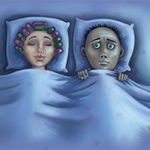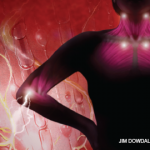Every few years, when we visited our extended family in India, I would see hints of a familial trait. There were many young uncles and aunties with stiff backs and difficulties getting up from seated positions. Sometimes, I would see them casually massaging their knees and ankles under the warm Indian sun. It wasn’t something that was obtrusive, but just odd enough that a kid would remember it. Certainly, if it was a secret, it was a fairly open one.
When I entered my third year of medical school, the pieces started to come together. Even with both of my parents being doctors, we didn’t really broach the topic until I mentioned that I was learning about ankylosing spondylitis. I was surprised to hear from my father that his maternal uncle (whom I had never met) had very classic ankylosing spondylitis. More stories came out about how my father struggled during medical school with swollen joints and even bouts of uveitis. He even disclosed that he had been prescribed large doses of salsalate, whose side effects were worse than its benefits. It was interesting to hear because he spoke about it in such a matter-off-act way. The only emotion that really came out was toward the end, when he sighed and said, “I hope it doesn’t affect you.”
As I reflect on this now, as a rheumatologist who routinely sees patients with inflammatory arthritis, I see strands that unite us. The idea of the arthritis being both a secret and yet self-evident, a badge of shared identity stemming from a source of dread and a certainty always shrouded in doubt, is something I think about every day, both as a patient and as a rheumatologist.
Becoming a Patient
Fast forward a few years and my family history became my fate. I had my first bout of inflammatory back pain during my intern year in residency at the University of Kentucky, Lexington. And like the most recent incident I already described, it happened so quickly I didn’t have a chance to even realize what was happening. Our team was rounding, and from room to room, I became more fidgety, trying to move around to stave off the stiffness. This behavior notably irritated my senior resident, who asked me if I was “tweaking.”
At the end of the day, it dawned on me what was occurring, and I took an ibuprofen to obtain some modicum of relief. In fact, I took NSAIDs for weeks on end, hoping it would just go away. The only reason I stopped was because I let it slip to my nephrology attending—and he admonished me against long-term NSAID use. Luckily, the pain did go away, and I didn’t need to worry about it, in large part because I had a lot of other things to worry about.



